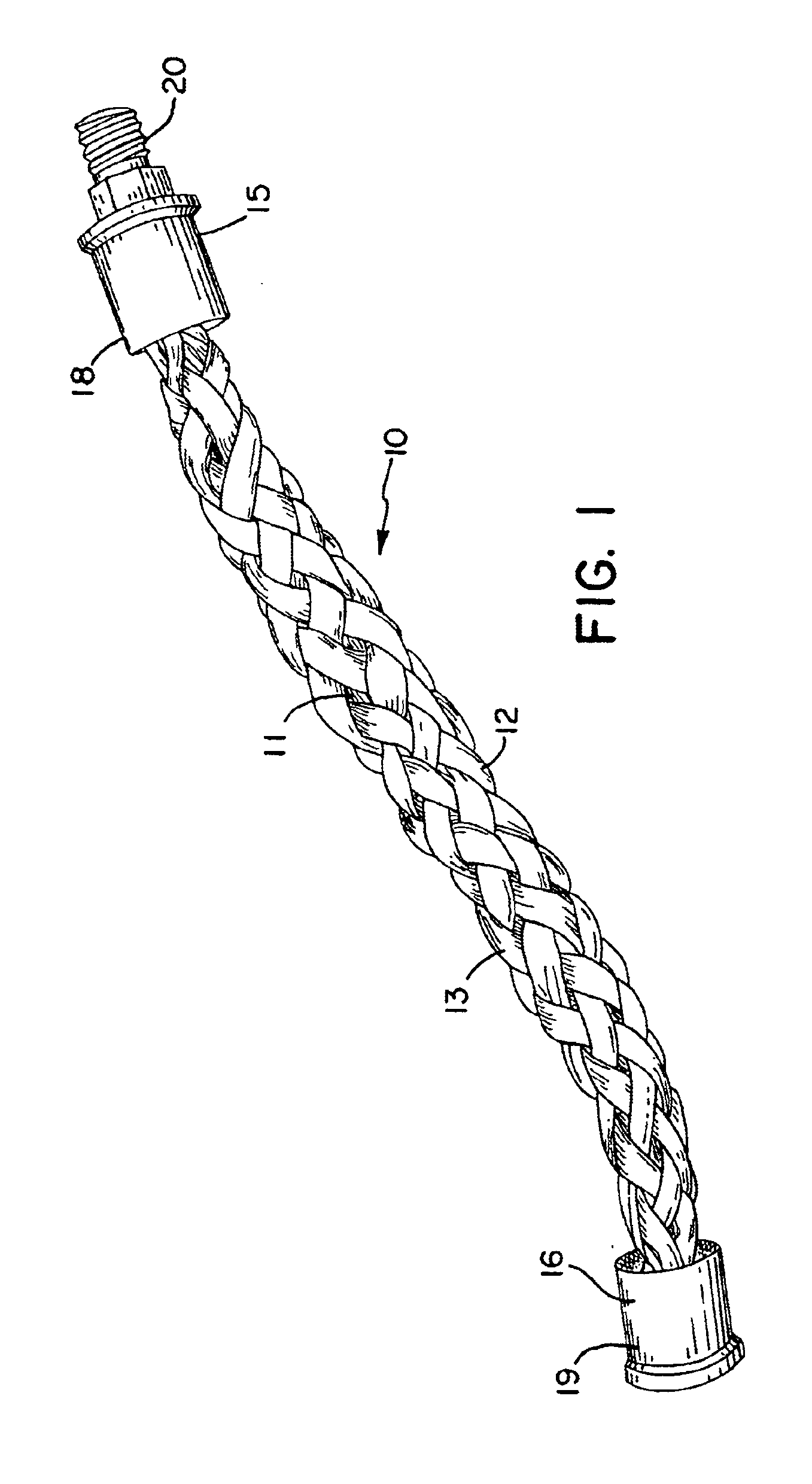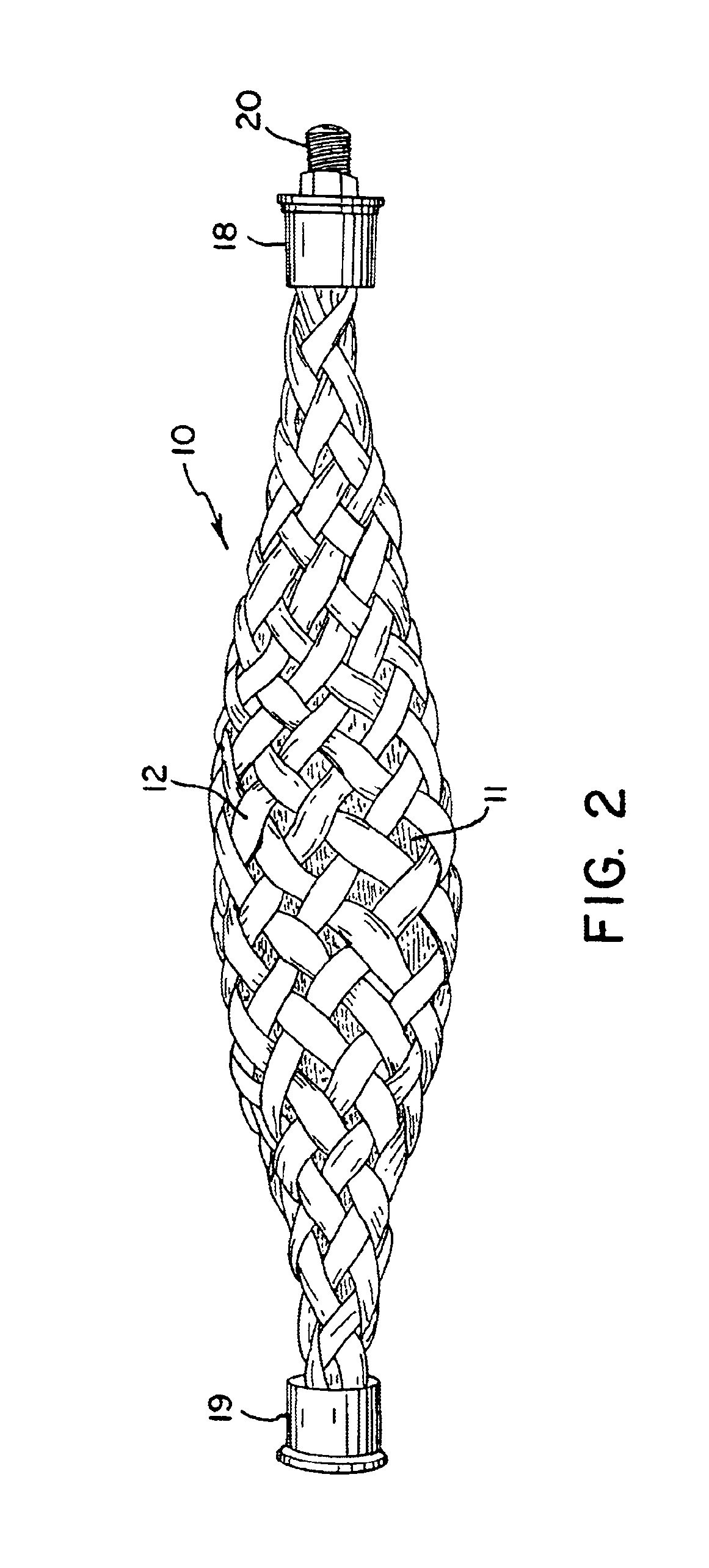Fluidic actuator
a technology of hydraulic actuators and actuators, which is applied in the direction of flexible wall reciprocating engines, reciprocating piston engines, positive displacement engines, etc., can solve the problems of actuators that have been subject to certain practical problems, their use, and can have a relatively long stroke, etc., to achieve low cost, long service life, and low friction
- Summary
- Abstract
- Description
- Claims
- Application Information
AI Technical Summary
Benefits of technology
Problems solved by technology
Method used
Image
Examples
Embodiment Construction
With reference to the drawings, a fluidic actuator in accordance with the invention is shown generally at 10 in FIG. 1 in its uncontracted or relaxed configuration. The actuator 10 has an elastic tube 11 (e.g., surgical tubing) which is surrounded by a sheath 12 formed of braided fibers 13. A thin-walled tube may be preferred for some purposes, and relatively thick walled tubes (e.g., ½ inch inside diameter / 1½ inch outside diameter) of elastics such as gum rubber may be preferable for other applications. The central tube is largely obscured in FIG. 1 by the outer sheath 12 and is more clearly illustrated in the cross-sectional views of FIGS. 3 and 4 taken at a first end 15 and a second end 16, respectively, of the actuator. End fittings 18 and 19 are attached to the ends of the tube 11 and the sheath 12 at the first end and second end, respectively, in a manner as discussed further below. The fitting 18 at the first end 15 includes a fluid coupling 20 by which a fluid supply line, e...
PUM
 Login to View More
Login to View More Abstract
Description
Claims
Application Information
 Login to View More
Login to View More - R&D
- Intellectual Property
- Life Sciences
- Materials
- Tech Scout
- Unparalleled Data Quality
- Higher Quality Content
- 60% Fewer Hallucinations
Browse by: Latest US Patents, China's latest patents, Technical Efficacy Thesaurus, Application Domain, Technology Topic, Popular Technical Reports.
© 2025 PatSnap. All rights reserved.Legal|Privacy policy|Modern Slavery Act Transparency Statement|Sitemap|About US| Contact US: help@patsnap.com



